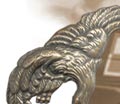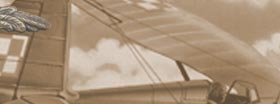The Long Bridge: Out of the Gulags
By Urszula Muskus (2010), Sandstone Press,
UK ISBN-13: 978 1 905207-55-8
Urszula Muskus account of the gulags was first printed in Polish in 1975. Sandstone Press has now published it in association with Amnesty International. The introduction by Peter Muskus, the grandson of Urszula contextualizes the story in terms of how political oppression classified the script as ‘subversive’ where the truth about Stalin’s tyrannical and toxic regime almost obliterated any evidence to suggest 15 million people had been killed before euphemism’s like ‘ethnic cleansing’ attempted to sanitize and make mass murder more palpable for modern media to broadcast. Urszula’s account remains as ‘fresh’ and as relevant today where conflict draws in bystanders to all the horrors and suffering caused by conflict. The book is truly wonderful and it took great courage not only to survive the gulags, but also write the book.
The book opens with Urszula dreaming of what was to become her real nightmare. After a good summer, the autumn of 1939 brought a bumper harvest, which the older inhabitants of Rawa-Ruska mused they had not seen since 1914. Then the dogs howled and the refugees fleeing Lwow came. The September campaign saw the young Polish men march away, some never to return and then the tyranny took hold. First the Germans by night on the 13th day of fighting with the town ransacked and Gestapo with SS support rounded up or simply murdered the Jews on the spot. The Germans handed over the local towns and territory with a small, somewhat civilised ceremony that masked the true horrors of what was to come. The Molotov Ribbentrop pact had shocked Poland and the Western allies in its callous audacity.
Urszula’s graphic account of the mass round up and deportation in the winter of 1940 was written as a testament for those who had not survived the war. She had married Wladyslaw in October 1924 and led a typical middle class life during the inter-war period where Poland had defeated the Bolshevik invasion in 1920 and the newly emergent Poland was trying to rebuild a shattered economy and develop a more stable political system. On Wladyslaw’s arrest she was able to throw a package of food, as his column was about to board the train bound for Lwow and imprisonment in Brygidki Prison. Then the Red Army came at night for the rest of the Muskus family. They were to be deported on the grounds of ‘dangerous social elements’. Loaded and packed tightly into cattle trucks, Urszula caught the last glimpse of her extended family through the cracks in the wall. At Lwow local people offered food and water despite guards beating them back from the train. As they headed east to Alga, the level of poverty and under nourishment in the local populations they passed through caused consternation amongst the deportee.
Life on the Tok-Man-Say collective farm brought the deportees into a cycle of seeking food while trying to make inadequate accommodation bearable. Urszula’s account of meeting with Kazakhs and staying in their auyl demonstrated simple traditions of hospitality had given hope for some of the deportees. Her account of a local ‘chief’ bartering for a young woman’s ‘hand in marriage’ demonstrated Kazakh tradition and religion would not succumb to Soviet indoctrination. Despite working hard, the poorly managed collective farm would not provide sufficient food or shelter to survive. So Urszula set off to the local town to negotiate setting up textile production utilising locally sourced wool from livestock ranging from sheep and goats to camels, and this enabled her to leave and make her way to Aktyubinsk.
On 14th August 1941 Poland and the Soviet Union signed a pact, which included an amnesty for the detained Poles, who made their way to join General Anders’ free Polish Army. Despite the organizational chaos, ex-prisoners started to arrive at the railway station in Aktyubinsk, much to Urszula’s delight, but also in desperate need of being fed. Urszula’s natural ability to organize brought her into contact with General Anders and his staff at Buzuluk. Working for the Polish Embassy with the role of relief officer for Poles in the Aktyubinsk region, her work came to the attention of the NKVD and she was arrested for espionage. On her journey to Alma-Ata she witnessed the little reported typhus epidemic that had ravaged the region, leaves the feeling of despair over the enormity of the inhumane and inept Soviet system.
In Alma-Ata, Urszula was interrogated over four months and attempts were made to coerce her into ‘denouncing’ officers in General Anders entourage. Throughout the book Urszula’s painstaking detail in the account highlights the brutality of the Soviet system. Shipped to Karabas and then to Shakhan in a series of stages or etap, Urszula joined the millions of political prisoners being shuffled through the system to the gulags. Urszula’s description of life in the various camps is a testimony of the time and when ‘revisionist history’ threatens to cleanse, these accounts remain to this day a timely reminder. Freedom was ‘promised’ in May 1952 when ten years of penal servitude was completed, but it was not over as the system did not release it’s grip on prisoners easily. On her forced journey to Long Bridge in Siberia Urszula fell in love with a Japanese prisoner. There they made a home and the company of a Siberian dog called Alma protected and entertained them through the harsh winter while the death of Stalin encouraged gossip amongst the exiled community. That winter Alma produced a litter of puppies and for a moment broke the monotony of life. They decided to keep a puppy and named him Mamataro. Again, the reader feels Urszula regained some of the will to survive whatever next the Soviet system or the society it had created would care to impose including the sinister disappearance of her dog Alma.
Released in early 1956 the reverse train journey through Russia was not without incident – mainly at the hand’s of Urszula making the most of any opportunity whether it be a visit to the museum in Krasnoyarsk or deliberately missing her train in order to see Moscow. On crossing the river Dnieper on the last leg of the journey to Tarnopol, Urszula recalls her dream of sixteen years earlier where her journey and crossing of ‘the long bridge’ was about survival and keeping faith with the belief she would eventually return to her family in Przemysl.
The Long Bridge is a testament to survival within a brutal regime. The book where possible, names those who most likely perished in the brutality of the Gulag and enables them to be remembered by future generations. Urszula’s recount of the Soviet system has enabled others to trace missing relatives while the detail of the brutality does not overshadow the small incidents that made life just bearable. The account has compassion and written with a voice that remains uplifting and inspirational throughout at a time when the book was banned. The postscript by Peter Muskus closes the account and acts as a reminder that the deportees despite separation and imprisonment maintained their humanity to survive these harsh conditions with many going on to have meaningful family and professional lives.
Julian Hoseason, editor polandinexile.com





